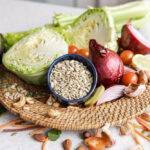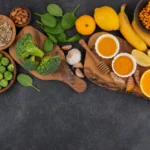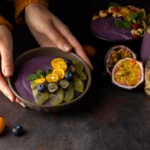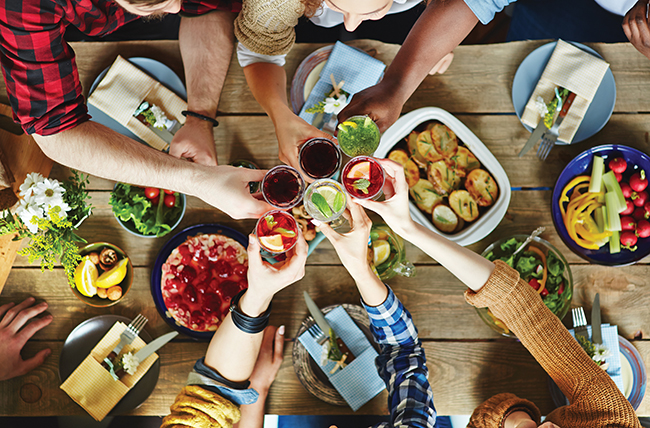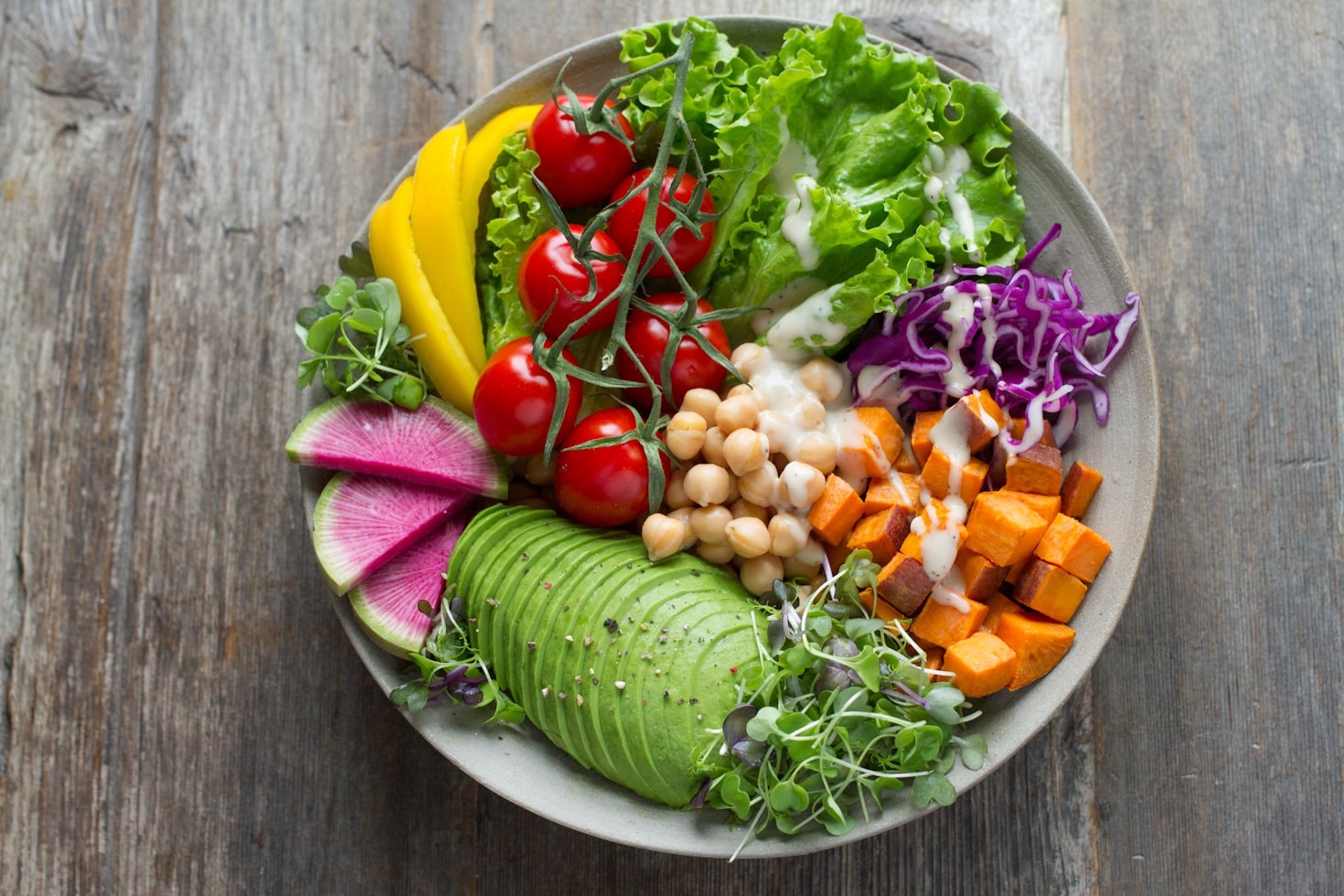Hosting a dinner party is an act of hospitality, connection, and sharing. When that dinner party is vegan, it adds layers of intention related to ethics, health, and culinary exploration. This analysis provides a 360° guide to hosting a successful Vegan Dinner Party, examining it through the lenses of the Host, the Vegan Guest, the Non-Vegan Guest, the Nutritionist, and the Cultural Observer. We delve into practical planning, guest experiences, nutritional balance, and the social significance of plant-based entertaining. This multi-lens approach aims to equip hosts with the insights needed to create memorable, delicious, and inclusive gatherings.
Culinary Crossroads: Where Hospitality Meets Plant-Based Plates
A Vegan Dinner Party stands at a unique culinary crossroads. It’s where the host’s desire to share good food and company intersects with the principles of plant-based living. It’s an opportunity not just to feed guests, but potentially to nourish curiosity, challenge preconceptions, and demonstrate the vibrant diversity and deliciousness of vegan cuisine. Success hinges on navigating this intersection with thoughtfulness, skill, and a focus on genuine hospitality that makes everyone feel welcome and satisfied.
LENS 1: The Host’s Playbook – Orchestrating the Experience

From the host’s perspective, a successful Vegan Dinner Party requires thoughtful planning and execution, balancing culinary ambition with practical realities. The goal is a seamless, enjoyable experience for both guests and host.
- Menu Mastery:
- Balance & Variety: Aim for diverse textures, flavours, and colours. Include familiar elements alongside potentially new ones. Consider appetizer, main course, sides, and dessert.
- Guest Considerations: Discreetly inquire about allergies or strong dislikes beyond just being vegan (e.g., nut allergies, gluten intolerance, mushroom aversion). Cater to varying levels of adventurousness among guests.
- Wow Factor Wisely: Choose dishes that showcase vegan food’s potential but are manageable. A stunning main or dessert can be memorable. Avoid overly complex dishes that stress you out.
- Strategic Shopping & Prep:
- Ingredient Check: Review recipes and list needed items. Check labels meticulously for hidden animal products (e.g., in broths, sauces, wine).
- Source Smarts: Identify where to buy specialty vegan items (tofu, tempeh, nutritional yeast, vegan cheese/butter) if needed. Farmer’s markets offer fresh produce.
- Prep Timeline: Plan what can be made ahead (sauces, desserts, chopping vegetables) to minimize day-of stress. Create a cooking schedule.
- Ambiance & Extras:
- Setting the Mood: Music, lighting, and table setting contribute significantly. Keep it welcoming and comfortable.
- Beverages: Offer interesting non-alcoholic options alongside alcoholic ones. Ensure wine/beer is vegan (Barnivore.com is a useful resource).
- Gracious Hosting: Be prepared to answer questions about the food positively and informatively, but avoid lecturing. Focus on sharing, not converting.
- Daily Impact: Hosting can be stressful, vegan or not. The added layer involves ensuring ingredient compliance and potentially managing guests’ unfamiliarity. However, the reward of sharing delicious vegan food and creating a positive experience is immense.
- Voice of Experience (Seasoned Vegan Host): “My key is planning ahead. I choose reliable, crowd-pleasing recipes, do most prep the day before, and focus on creating a relaxed vibe. It’s about connection, and the food is the delicious vehicle for that.”
- Alternative Approaches: Consider a vegan potluck (provide the main, guests bring sides/desserts), a themed night (e.g., Vegan Mexican Fiesta, Italian Feast), or a more casual buffet style instead of a formal sit-down meal.
- Perspective Question: How can you plan your Vegan Dinner Party to maximize enjoyment and minimize stress for yourself as the host?
LENS 2: The Vegan Guest’s Perspective – Feeling Included and Celebrated

For a vegan guest, being invited to a dinner party where their dietary needs are thoughtfully catered for is a deeply appreciated gesture. It signals respect and inclusion.
- The Joy of Being Seen: Attending social events often involves careful navigation for vegans (checking menus ahead, eating beforehand, bringing their own food). A dedicated Vegan Dinner Party removes this burden, allowing them to relax and fully participate.
- Appreciation for Effort: Vegan guests recognize the extra thought and effort the host puts in, especially if the host isn’t vegan themselves. It fosters goodwill and connection.
- Culinary Camaraderie: Sharing familiar and delicious vegan food with others (vegan or not) in a welcoming social setting is a positive experience. It normalizes their food choices.
- Potential Pitfalls (from poor hosting): Being served only a basic salad while others have elaborate meals, or dishes that are technically vegan but lack flavour or substance, can feel like an afterthought and be disappointing.
- Voice of Experience (Vegan Guest): “It’s honestly such a relief and a joy to go to a dinner party where I know I can eat everything! It makes me feel truly welcomed and cared for when a host makes that effort.”
- Hidden Benefits: Attending a well-hosted Vegan Dinner Party can provide inspiration for the guest’s own cooking and entertaining.
- Perspective Question: As a guest, how does a host’s thoughtful accommodation of your vegan lifestyle enhance your social experience?
LENS 3: The Non-Vegan Guest’s Experience – Discovery and Demystification

Non-vegan guests may approach a Vegan Dinner Party with a mix of curiosity and, sometimes, apprehension. The host’s approach and the quality of the food are crucial in shaping their experience.
- Curiosity & Preconceptions: Guests might wonder what vegan food tastes like, if it will be filling, or if it will be “weird.” They may associate veganism with restriction.
- The Power of Deliciousness: Serving genuinely tasty, satisfying, and visually appealing food is the most effective way to challenge negative stereotypes. Surprise and delight are powerful tools.
- Demystification: A positive experience can demystify vegan eating, showing it’s not about deprivation but about abundance and flavour. It can broaden their culinary horizons.
- Host’s Influence: A relaxed, confident host who presents the food without apology or defensiveness creates a comfortable atmosphere for exploration. An overly preachy host can be off-putting.
- The Takeaway: Even if guests don’t become vegan, a successful party can leave them with a newfound appreciation for plant-based dishes and perhaps inspire them to try more vegan options.
- Voice of Experience (Non-Vegan Guest): “I wasn’t sure what to expect, but my friend’s vegan lasagna was incredible! I honestly didn’t miss the meat or cheese. It made me realize vegan food can be really hearty and flavourful.”
- Critical Reassessment: Hosts should avoid “trickery” (e.g., trying to pass off vegan meat as real) and instead celebrate the ingredients for what they are. Authenticity builds trust.
- Perspective Question: What preconceived notions might a non-vegan guest have, and how can the host address them through food and atmosphere?
LENS 4: The Nutritionist’s Angle – Crafting a Balanced and Appealing Menu

From a nutritional standpoint, a Vegan Dinner Party is an excellent opportunity to showcase how balanced, satisfying, and nutrient-dense plant-based meals can be.
- The Balanced Plate: Ensure the menu includes good sources of:
- Protein: Lentils, beans, chickpeas, tofu, tempeh, seitan, quinoa, nuts, seeds. Combine sources for a complete amino acid profile throughout the meal.
- Complex Carbohydrates: Whole grains (quinoa, brown rice, farro), root vegetables (sweet potatoes, squash), legumes for sustained energy.
- Healthy Fats: Avocados, nuts, seeds, olives, quality plant oils for flavour and satiety.
- Vitamins & Minerals: Abundant colourful fruits and vegetables.
- Satiety Factors: Protein, fat, and fiber are key to making guests feel full and satisfied. Don’t skimp on these components, especially in main courses. Think hearty stews, substantial grain salads, creamy sauces (cashew- or tofu-based).
- Nutritional Deep Dive: Satisfying Vegan Mains Beyond pasta or salad, focus on mains with umami depth and texture. Examples: Mushroom Bourguignon, Lentil Shepherd’s Pie with sweet potato topping, Creamy Tofu Tikka Masala, Black Bean Burgers on whole-wheat buns with all the fixings, Roasted Vegetable Tart with cashew cream. These dishes offer complexity and satisfy cravings often associated with meat.
- Allergen Awareness: Be mindful of common allergens often prevalent in vegan cooking (nuts, soy, gluten). If serving guests with allergies, ensure strict separation during prep and clear labeling if serving buffet-style.
- Voice of Experience (Plant-Based Nutritionist): “A vegan dinner party can be incredibly nutritious! Focus on whole foods, incorporate diverse protein sources, and don’t be afraid of healthy fats. It’s a fantastic way to show that plant-based eating is both healthy and delicious.”
- Hidden Benefits: Vegan dishes are often lower in saturated fat and cholesterol-free. Highlighting fresh, seasonal produce can increase the meal’s nutrient density and appeal.
- Perspective Question: How can you design your menu to be not only delicious but also nutritionally balanced and satisfying for all your guests?
LENS 5: The Cultural Observer’s View – Social Rituals and Shifting Norms

The cultural observer sees the Vegan Dinner Party as a microcosm of broader societal shifts in food culture, ethics, and social interaction.
- Normalization & Mainstreaming: The increasing frequency of vegan dinner parties reflects veganism’s move from a fringe movement to a more recognized and accepted lifestyle choice. It’s becoming a normal part of the social fabric.
- Site of Exchange: These gatherings can act as informal spaces for cultural exchange, where hosts share their values and culinary discoveries, and guests potentially gain new perspectives.
- Influence of Media & Influencers: Cookbooks, blogs, and social media dedicated to vegan entertaining provide inspiration and practical guidance, shaping trends and aesthetics (e.g., elaborate grazing boards, rustic chic).
- Connection to Wellness & Sustainability: Vegan entertaining often aligns with broader cultural interests in health, wellness, and environmentally conscious living.
- Culinary Exploration: Hosts often draw inspiration from global cuisines naturally rich in plant-based traditions (Indian, Thai, Ethiopian, Mediterranean), promoting culinary diversity.
- Voice of Experience (Food Sociologist): “The way we share food reflects our values and social structures. The rise of the vegan dinner party signifies evolving ethics around food, health consciousness, and a growing desire for inclusive social practices.”
- Market Transformation Map: Show the growth trajectory of readily available vegan entertaining products – artisanal vegan cheeses, plant-based charcuterie, high-quality vegan wines, gourmet vegan desserts – making hosting easier and more sophisticated.
- Turning Point Analysis: Key moments include: the publication of influential vegan cookbooks focused on entertaining (e.g., by Isa Chandra Moskowitz, Minimalist Baker), celebrity chefs incorporating high-end vegan menus, the viral spread of appealing vegan recipes on platforms like Pinterest and Instagram, and increased media coverage framing veganism positively.
- Perspective Question: How does the act of hosting or attending a Vegan Dinner Party reflect larger changes in our culture’s relationship with food?
PERSPECTIVE INTERSECTION MATRIX
| INTERSECTION | HOST’S PLAYBOOK | VEGAN GUEST | NON-VEGAN GUEST | NUTRITIONIST | CULTURAL OBSERVER |
| Host’s Playbook | – | Creates welcoming/stressful event | Shapes perception/experience | Menu balance impacts success | Reflects hosting trends/skills |
| Vegan Guest | Feedback informs future hosting | – | Can influence their perspective | Appreciates balanced options | Represents growing demographic |
| Non-Vegan Guest | Reaction shapes host confidence | Interaction can be informative | – | Experience challenges assumptions | Reflects broader curiosity/bias |
| Nutritionist | Informs menu planning | Ensures guest well-being/satiety | Addresses ‘will I be hungry?’ fear | – | Links party to health trends |
| Cultural Observer | Notes evolving hosting norms | Sees normalization of veganism | Observes shifting perceptions | Connects food trends to health | – |
Analysis: The host’s planning (Lens 1) directly impacts all guest experiences (Lens 2 & 3) and relies on nutritional understanding (Lens 4) and cultural context (Lens 5). Guest reactions feed back into the host’s approach and reflect broader cultural attitudes. Nutrition and culture provide frameworks influencing both planning and reception.
MISCONCEPTION ANALYSIS
| MISCONCEPTION | REALITY |
| Vegan Dinner Parties are inherently difficult or complicated to host. | With planning and the right recipes, it can be straightforward. Many global cuisines offer simple, flavourful vegan dishes. Focus on whole foods. |
| Guests (especially non-vegans) will leave hungry or unsatisfied. | A well-planned menu with adequate protein, healthy fats, and fiber is very satisfying. Hearty mains are key. |
| Vegan food is bland, boring, and lacks variety. | Vegan cuisine spans the globe and utilizes countless herbs, spices, sauces, and techniques. Flavour depends on the cook, not the ingredients’ origin. |
| You need expensive, specialty ingredients to make good vegan food. | Many delicious vegan meals rely on affordable staples like beans, lentils, grains, and seasonal vegetables. |
| Hosting a Vegan Dinner Party is primarily about converting guests. | Successful hosting prioritizes hospitality, connection, and sharing delicious food, regardless of guests’ dietary choices. Education happens best through positive experience. |
KEY TURNING POINTS
- Rise of Vegan Blogs & Cookbooks (Early 2000s onward): Made creative, tested recipes widely accessible, moving beyond basic tofu scrambles.
- Mainstream Availability of Key Ingredients (2010s): Easier access to non-dairy milks, vegan butter, nutritional yeast, diverse tofu/tempeh options lowered barriers.
- Social Media Boom: Platforms like Instagram and Pinterest visually showcased the appeal and variety of vegan food, inspiring home cooks.
- “Flexitarian” Trend: Increased openness among non-vegans to trying plant-based meals made hosting mixed groups less daunting.
- Development of High-Quality Vegan Alternatives: The creation of better-tasting vegan cheeses, meats, and desserts expanded possibilities for familiar celebratory dishes.
SYNTHESIS & RECOMMENDATIONS: Convergent Reflections
Hosting a successful Vegan Dinner Party is an art that blends culinary skill with genuine hospitality. It requires thoughtful planning (Host), empathy for all guests’ experiences (Vegan & Non-Vegan), attention to flavour and balance (Nutritionist), and an awareness of the social context (Cultural Observer). The ultimate goal is not just to serve vegan food, but to create a warm, inclusive atmosphere where everyone feels welcome, enjoys delicious food, and connects with others.
- Recommendations:
- Focus on Flavour First: Choose recipes known for being delicious, regardless of being vegan.
- Plan Thoughtfully: Create a balanced menu, shop wisely, and prep ahead.
- Know Your Audience: Consider guests’ familiarity with vegan food and any other dietary needs.
- Be a Gracious Host: Share your food with joy and confidence, answering questions openly without being preachy.
- Make it Inclusive: Ensure the atmosphere, drinks, and overall experience are welcoming to everyone.
- Don’t Aim for Perfection: Relax, enjoy the process, and focus on connection over a flawless culinary performance.
A well-executed Vegan Dinner Party nourishes bodies and relationships, leaving guests with happy memories and perhaps a new appreciation for the possibilities of plant-based cuisine.
FURTHER AREAS OF EXPLORATION
- Hosting Vegan Holiday Meals (Thanksgiving, Christmas, etc.)
- Vegan Wine and Food Pairing Guides
- Creating Kid-Friendly Vegan Party Food
- Zero-Waste and Sustainable Vegan Entertaining Tips
- Exploring Specific Global Cuisines for Vegan Dinner Parties (e.g., Ethiopian, Indian Street Food)
- Budget-Friendly Vegan Entertaining Strategies


